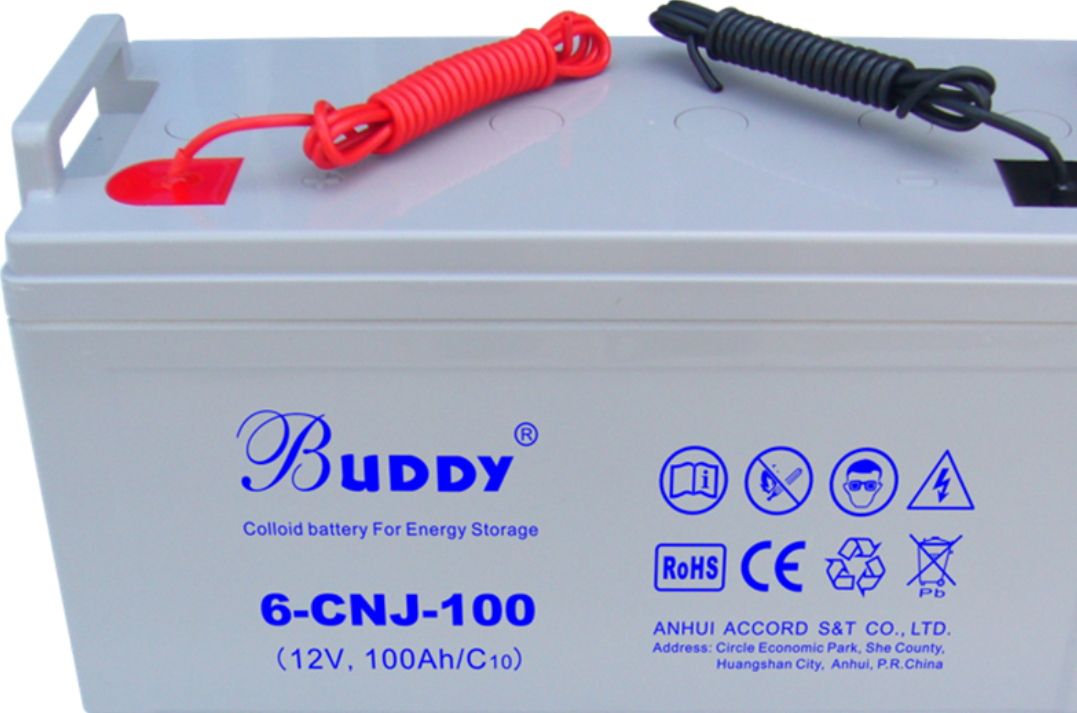The storage standard of lead-acid batteries is crucial to ensure the performance, safety and extended service life of batteries. First of all, temperature is an important factor affecting the storage of lead-acid batteries. Generally, the storage temperature of the lead-acid battery should be controlled between 5°C and 35°C. In this temperature range, the chemical reaction inside the battery can be stable, preventing the electrolyte from evaporating or freezing too quickly. If the temperature is too low, the electrolyte will become viscous, reducing the battery performance; The high temperature may accelerate battery aging and even cause safety accidents. Secondly, humidity is also a key factor to consider when storing lead-acid batteries. The appropriate humidity should be maintained between 50% and 80%. Too low humidity may cause the electrolyte to evaporate too quickly, while too high humidity may cause battery corrosion and affect its performance. Therefore, ensure that the humidity in the storage environment is moderate to prevent battery damage. In addition, ventilation conditions are equally important. The place where the lead-acid battery is stored should have good ventilation conditions to prevent the accumulation of gas generated by the battery in a closed environment, causing safety problems. At the same time, avoid direct sunlight and strong light exposure to reduce the heat accumulation inside the battery.

During the storage process, it is also necessary to avoid contact between the battery and any liquid and harmful substances to prevent dirt from falling into the battery. At the same time, the battery should be discharged on the wooden frame to avoid stacking and any mechanical impact to prevent short circuit or damage to the battery. In addition, the warehouse for storing lead-acid batteries should meet certain layout and environmental conditions. The warehouse should be separated from other dangerous goods warehouses to avoid mutual pollution; With certain natural ventilation conditions, the exhaust pipe is set outdoors; Set up an evacuation route to the warehouse and blast doors to ensure safety. At the same time, the warehouse should be installed with automatic fire alarm, gas alarm, and monitoring system, and equipped with anti-static floor and anti-static brush to prevent potential security risks.
Storage standards for lead-acid batteries include temperature, humidity, ventilation, lighting, marking, shelves or supports, and classified storage. Compliance with these standards helps to ensure stable battery performance, extend service life and reduce safety risks. Therefore, in actual operation, we should store lead-acid batteries in strict accordance with these standards.
As a common type of battery, lead-acid batteries have specific requirements in storage and management to ensure their safe and effective storage and extend their service life. This article will elaborate on the storage standards of lead-acid batteries.
First of all, when storing lead-acid batteries, you must have safety awareness and follow the relevant safety operating procedures. Safety risks such as leakage and short circuit may exist during storage of lead-acid batteries. Therefore, handle them properly.
Lead-acid batteries should be stored in a dry, ventilated and cool place, and the temperature is generally controlled between 5°C and 30°C to prevent spontaneous combustion or explosion of batteries caused by excessive temperature.
The humidity at the storage location should not be too high or too low to prevent battery leakage or shell corrosion. Maintaining a proper humidity environment is crucial to maintaining battery performance and service life.
Place away from fire source, static electricity, open flame and other potential risk factors to ensure environmental safety.
Lead-acid batteries of different types, specifications and states should be stored in different categories to avoid confusion and misuse.
The lead-acid battery should be placed smoothly to avoid tipping or falling, which may damage the internal structure of the battery.
Do not put other items under heavy pressure on the lead-acid battery during storage to prevent deformation or damage.
The lead-acid battery is sealed properly to prevent external impurities and moisture from entering the battery.
The storage period of the lead-acid battery depends on the specific situation, and it is generally recommended not to exceed one year. Batteries stored for a long time should be regularly charged and discharged.
Periodically check the appearance and voltage of lead-acid batteries to ensure that they are in good condition.
A lead-acid battery that is not used for a long time should be kept fully charged to avoid performance deterioration caused by excessive discharge.
Lead-acid batteries should not be exposed to sunlight or rain for a long time to avoid affecting the battery performance and service life.
Operators should comply with relevant operating procedures and safety requirements to ensure that no accidents occur during storage and management.
In short, understanding and following the storage standards of lead-acid batteries is an important measure to ensure their safe and effective use and extend their service life. In the specific implementation process, it should also be flexibly used according to the actual situation.